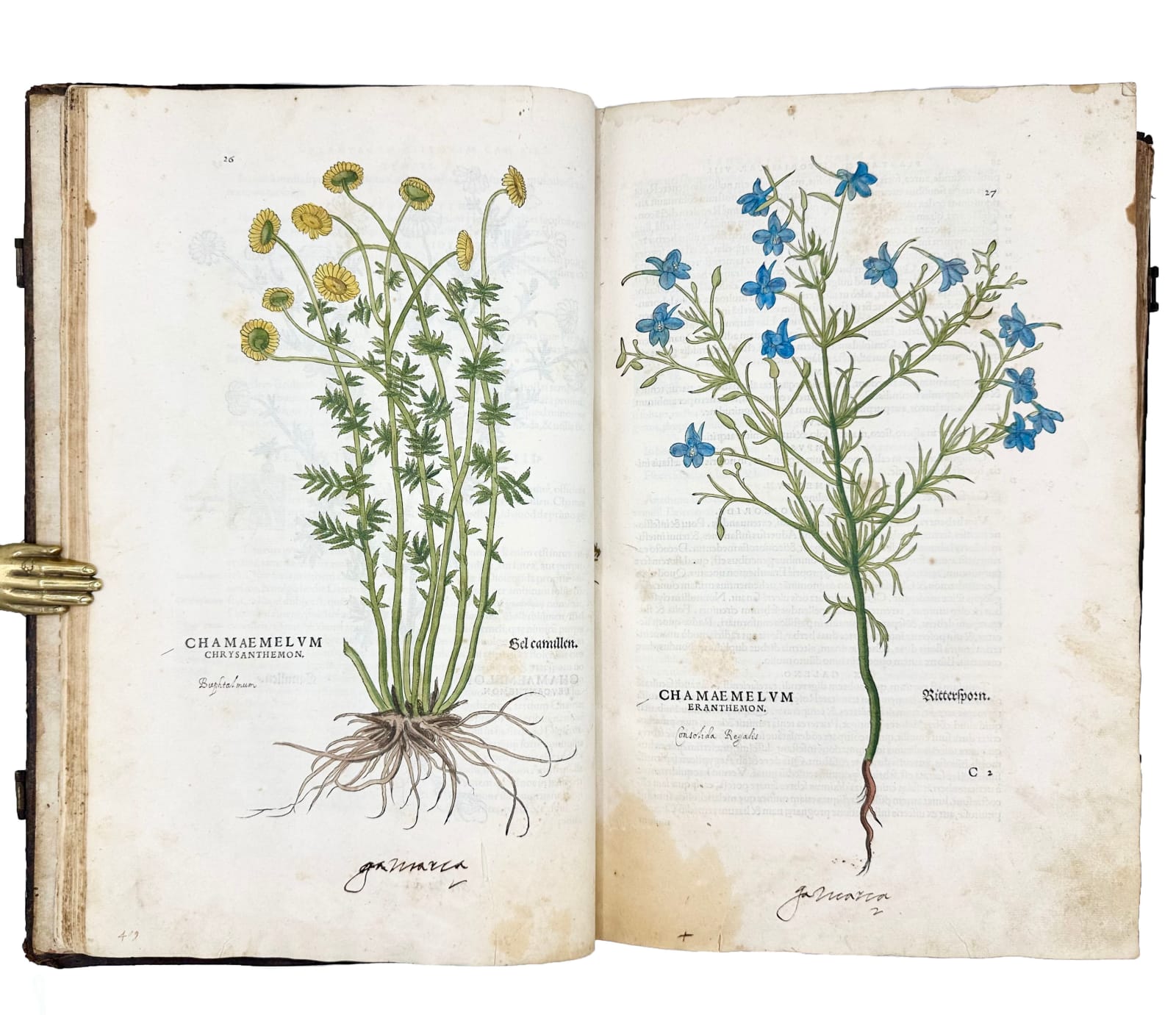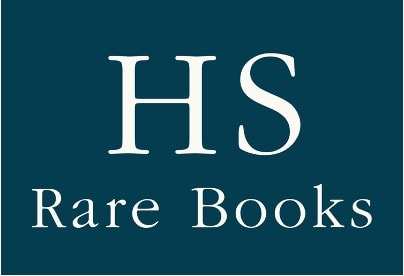










Fuchs, Leonard
First edition, a finely contemporary-colored copy of “perhaps the most celebrated and most beautiful herbal ever published” (Printing and the Mind of Man), a quality that as Fuchs’ explains, is integral to the text.
Further images
-
(View a larger image of thumbnail 1
)

-
(View a larger image of thumbnail 2
)

-
(View a larger image of thumbnail 3
)

-
(View a larger image of thumbnail 4
)

-
(View a larger image of thumbnail 5
)

-
(View a larger image of thumbnail 6
)

-
(View a larger image of thumbnail 7
)

-
(View a larger image of thumbnail 8
)

-
(View a larger image of thumbnail 9
)

-
(View a larger image of thumbnail 10
)

-
(View a larger image of thumbnail 11
)

Folio, (374 x 238 mm). Contemporary gilt calf, gilt coat of arms at center of both covers, spine richly gilt in compartments, metal clasps, corners bumped and somewhat worn. A generally fine copy with the woodcuts in contemporary color, paper repair along bottom edge of title-page not affecting text, light damp stain along bottom gutter of first 100 pages, paper repair to bottom edge of p. 54, corner of p. 63 restored, repaired tear across pp. 167-168 and 179-180, closed tears not affecting text to about a dozen leaves, larger to one leaf, paper repair to bottom edge of p 199, soiling to pp. 314-315, early owner's labelling in ink to bottom edges throughout, foxing and dampstain scattered, heavier at times, however most of the woodcuts relatively clean and bright overall.
Fuchs’ Historia is illustrated with portrait of himself and 510 woodcuts by Rodolphe Speckle, most of them with contemporary hand coloring, representing over 400 German plants and about 100 foreign plants, including some from the Americas, recently discovered and here described for the first time (for example, chili pepper, maize, pumpkin and snap bean). Each description of the plant contains additional information on their medicinal use.
“He described four hundred German and one hundred foreign plants and illustrated them in five hundred and twelve superb woodcuts. These were designed by Heinrieh Fiillmauer and Albert Meyer, and executed by Veit Rudolph Speckle, whose portraits appear in the book-one of the earliest examples of such a tribute paid to artists in a printed book.” (PMM).
The illustrations were drawn from life by Albert Meyer, mainly using examples from Fuchs’ garden at Tubingen; Heinrich Fullmaurer transferred the images to woodblocks, where they were cut by Rudolph Speckle: the three artists that intervene in this master Renaissance herbal are acknowledged and represented in a full-page woodcut in the book, a very early -if not the first- instance of recognition with an image of the artists in a printed book.
Most copies that survive are in black and white, however, the book was also sometimes colored, not just for its aesthetic value, but because the color imitates that of Fuchs’ drawings (which are no longer extant), and is thus integral to the text, it is in truth a book that should be colored, as here, carefully-applied in a delicate and vibrant palette.
The illustrations proved highly influential and were reused in later editions of the book, as well as copied in other works, for instance those of Bock, Dodoens, etc.; this book is the earliest source quoted by Linnaeus in his Species Plantarum.
“Of all the botanists of the Renaissance, Fuchs is perhaps the one who deserves most to be held in honour. He is notably superior to his two predecessors in matters calling for scholarship, such as the plant nomenclature of classical authors... The woodcuts which illustrate the book are of extraordinary beauty... In this work plant drawing, as an art, may be said to have reached its culminating point. The illustrations represent the high-water mark of that type of botanical drawing...” (Early Herbals, Lugano, 1925).
PMM 69; Nissen BBI 658; Pritzel 3138; Durling 1675; Wellcome 2438; Hunt p. 56, n.48; Adams F-1099.
Join our mailing list
* denotes required fields
We will process the personal data you have supplied in accordance with our privacy policy (available on request). You can unsubscribe or change your preferences at any time by clicking the link in our emails.
